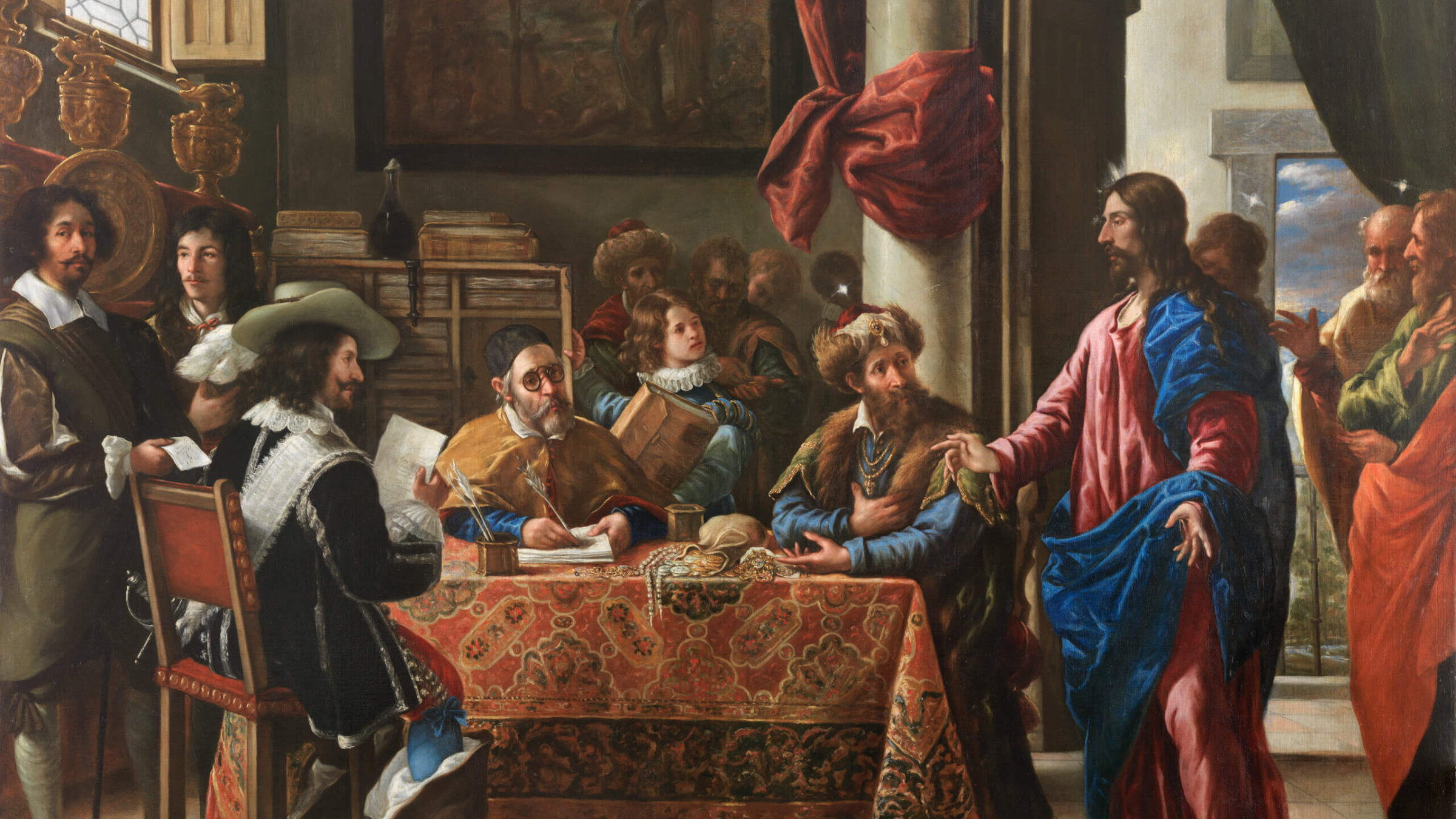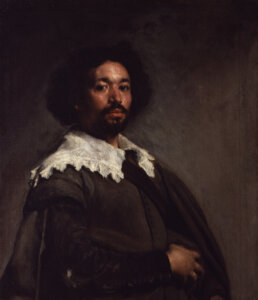One of history’s great artists may have had Jewish ancestry — is that why he freed his enslaved protege?
Juan de Pareja, once enslaved by Diego Velázquez, is the subject of a new exhibit at the Met

Juan de Pareja painted himself as the leftmost witness in his “The Calling of St. Matthew” (1661). Courtesy of The Metropolitan Museum of Art
Just before Passover, the Metropolitan Museum of Art opened an exhibit focused on the life and work of the once-enslaved 17th-century Spanish artist Juan de Pareja.
Until recently, Pareja has been mostly known through the exquisite 1650 portrait painted of him by the great Spanish artist Diego Velázquez, who enslaved Pareja for 20 years. Velázquez trained Pareja in his studio, and eventually freed him.

The exhibit raises questions that, during Passover, are particularly pertinent. Why did Velázquez wait two decades to free Pareja, an action he took shortly after finishing that famous portrait? What happened, in 1650, to compel him to rethink the meaning of slavery?
The answer might have something to do with the way in which art helps us see others in new ways: “The very act of portraying Pareja might have been the crucible that forced the painter to recognize his sitter’s humanity, a revelation that led to Pareja’s manumission nine months later,” the exhibit’s catalog suggests.
But it also might have to do with a surprising religious connection between the men: Both were at risk of being targeted by the Spanish Inquisition. Although Velázquez and Pareja were both practicing Catholics, they lived in a country where the judicial office known as the Spanish Inquisition investigated and persecuted any and all whom they suspected of religious heresy — in other words, any faith aside from devout Catholicism.
Particularly suspect were those whose ancestry was not considered “pure” — a group that included those with Jewish or Moorish ancestors. These people were often known as “New Christians,” a legal label passed from one generation to the next to ensure the continued control and authority of the powerful “Old Christian” aristocracy. No matter that such a conversion might have taken place a century or more before. “New” was an automatic disqualification for anyone seeking elevation from the royal court or acknowledgement of special merit.
Pareja was probably at least partially of Morisco, or Islamic, heritage. And Velázquez himself was possibly descended from Jewish conversos.
Call it Velázquez’s secret history — or perhaps the history he wished had been more secret after Spain’s Catholic King Philip IV offered to make him a knight. Approval of the honor required concrete proof that no Jewish, or Moorish, ancestors blotted the nominated honoree’s family tree.
In addition, the rules of knighthood required that family ancestors not be tainted by work in a trade or as artisans — middle-class employments that might also hint at a converso background.
Velázquez supplied the ancestral information, as requested. But most of it was fake. “He gave as his heritage grandparents who were not his grandparents, so they would not discover his heritage,” said Kevin Ingram, author of Converso Nonconformism in Early Modern Spain.
“It is my view that Diego Velázquez was from a converso background,” Ingram added.
In fact, although the investigators found no suggestion that Velázquez was a converso, they also did not find evidence that he came from noble ancestry. Fortunately for the artist, the Pope issued a special dispensation that allowed him to become a knight despite that ambiguity.
The honor satisfied the artist’s long-time desire for artistic and professional recognition, according to Ingram. It conformed to his conviction that “nobility is based on merit,” Ingram said.
“Velázquez is the most humane of painters; he sees humanity in everyone.”
And that brings us back to Velázquez’s decision to free Pareja. “I believe that as he was painting Pareja, Velázquez thought: It would be cynical of me to believe in every individual deserving merit” and not accord that merit to his slave, Ingram says. “I think that is when the idea came home to him that he needed to give Pareja his freedom.”
Pareja carried that same ethos forward in his own work. Among his paintings displayed at the Met is his large 1661 canvas The Calling of St. Matthew.
On the far left of the painting, Pareja portrays himself, in contemporary attire, as a witness to the scene in which Christ invites the tax collector Levi to give up his worldly goods and convert. By placing himself in the painting, Pareja compels us to view him as both a free man and a distinguished artist, with his powerful work standing before us as the only proof necessary of his merit.
A message from our Publisher & CEO Rachel Fishman Feddersen

I hope you appreciated this article. Before you go, I’d like to ask you to please support the Forward’s award-winning, nonprofit journalism so that we can be prepared for whatever news 2025 brings.
At a time when other newsrooms are closing or cutting back, the Forward has removed its paywall and invested additional resources to report on the ground from Israel and around the U.S. on the impact of the war, rising antisemitism and polarized discourse.
Readers like you make it all possible. Support our work by becoming a Forward Member and connect with our journalism and your community.
— Rachel Fishman Feddersen, Publisher and CEO





























